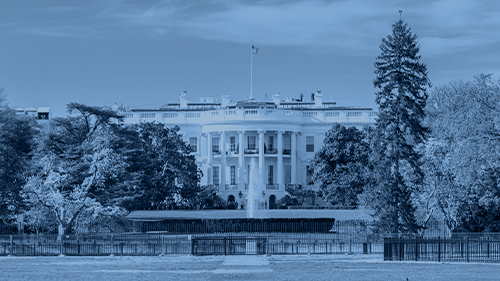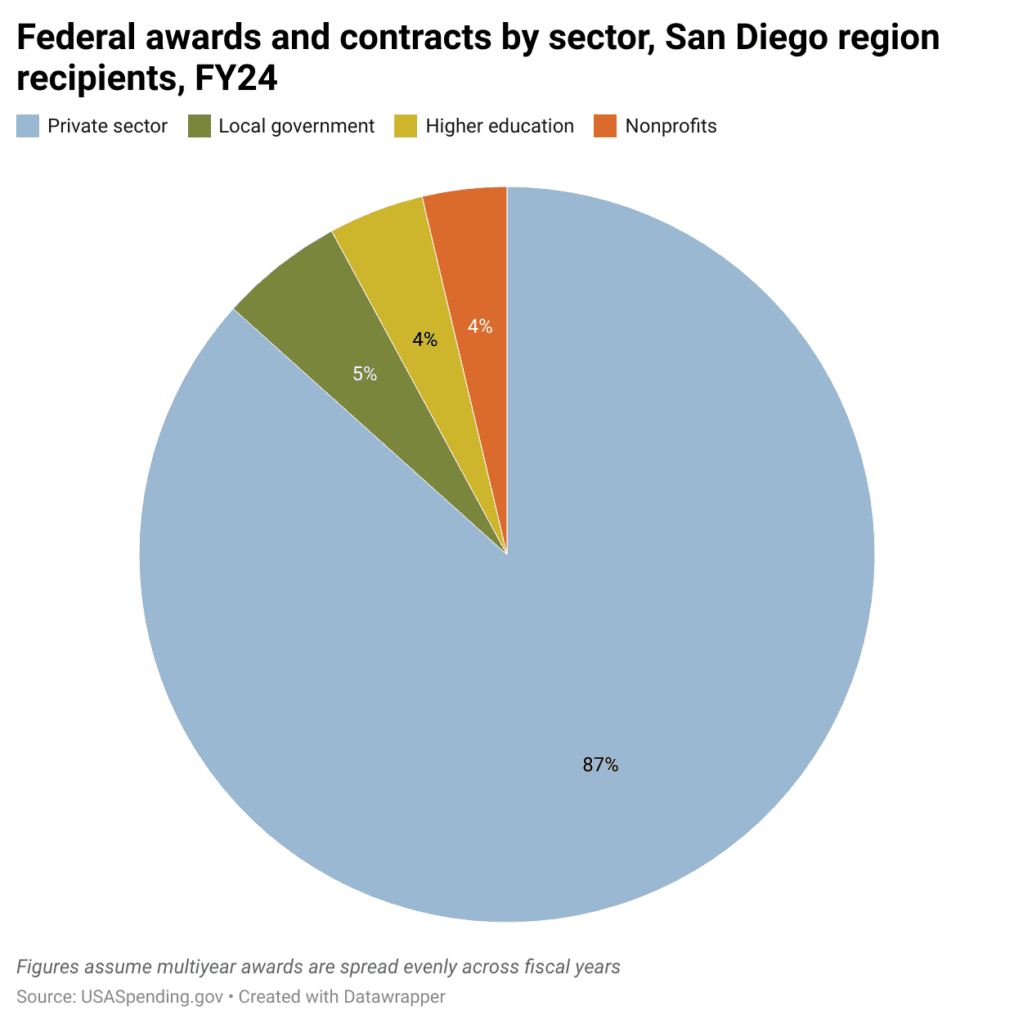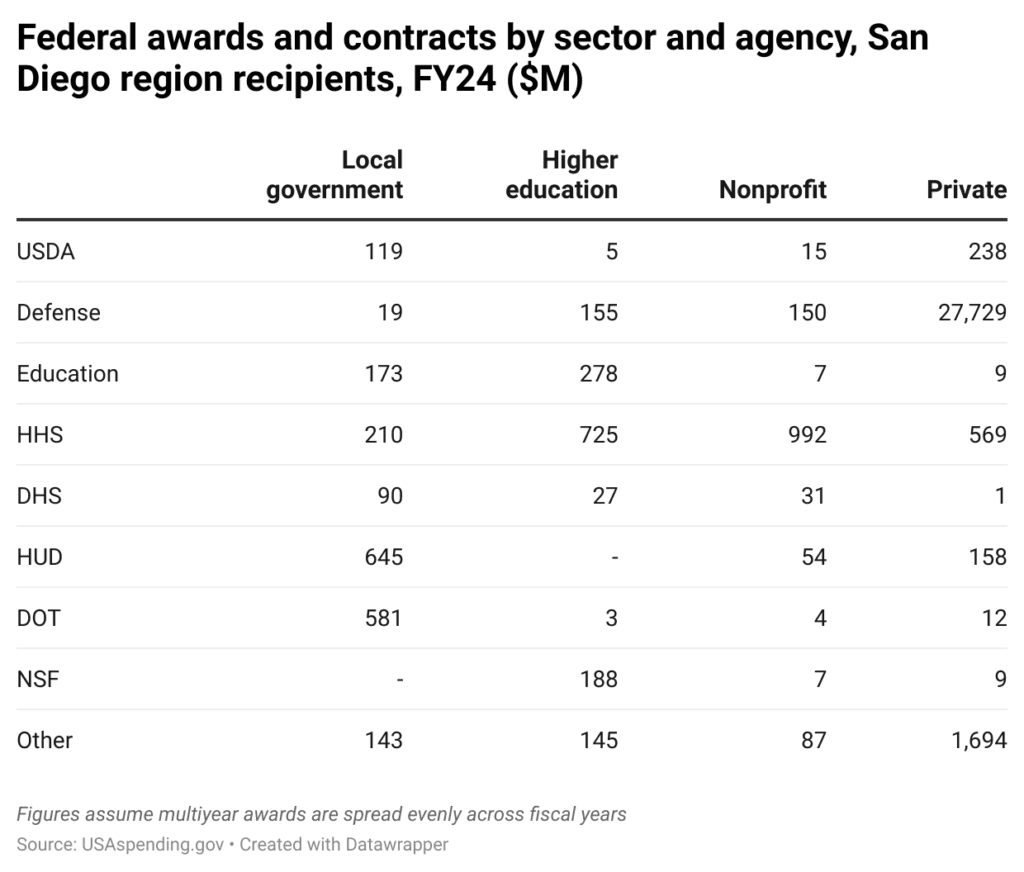Pulse on Policy: What New Leadership in Washington Could Mean for the San Diego Economy

Alan Berube, Senior Vice President
The first two months of the second Trump administration and the 119th Congress have unleashed changes, both real and potential, in the size, scope, and role of the U.S. federal government at an unparalleled rate. From dozens of presidential executive orders, to a flurry of cabinet agency decisions, to the actions of the so-called Department of Government Efficiency (DOGE), to the early outcomes from the congressional budget process, it has been hard to keep up. As a resident of Washington, D.C. who now spends quite a bit of time in San Diego, I have been thinking about the impacts of these changes not only on the nation as a whole, but also on the local San Diego economy.
Federal actions impact local and regional economies in a variety of ways
Federal policies and programs interact in myriad ways with local individuals and institutions, with the federal government variously acting as a:
- Direct investor, providing grants to local institutions to fund the provision of public goods (e.g., infrastructure, scientific research, education, disaster relief/repair);
- Indirect investor, funding states and other intermediary organizations to make grants to local providers of benefits and services (e.g., health insurance and childcare for low-income individuals, supports for refugee families);
- Redistributor of resources among individuals (e.g., Social Security for older adults, SNAP and Earned Income Tax Credit for lower-income families);
- Purchaser of equipment, buildings, and services (e.g., for national defense)
- Lender for small businesses and innovative companies, and insurer for home mortgages and bank deposits
- Employer of military and civilian workers
Of course, federal officials shape local economic conditions through fiscal, monetary, and regulatory policies that have geographically broad-based impacts. At the same time, they also develop and implement policies in specific areas such as trade and immigration that may have particularly pronounced impacts on binational communities such as Greater San Diego.
Federal spending significantly shapes the Greater San Diego economy
The Greater San Diego economy has historically been tethered more closely to the federal government than other U.S. regional economies, owing to its significant local military presence. In 2023, all government (federal, state, and local) output accounted for 10.5% of total U.S. GDP, according to the Bureau of Economic Analysis. In San Diego County, that share was 17.1%.
The federal government publishes detailed expenditure data, provided by the U.S. Treasury Department, on the USAspending.gov website. This includes transaction-level data for each federal fiscal year across a range of award types: grants and sub-grants, contracts and sub-contracts, direct payments to individuals, and loans and insurance. This analysis focuses primarily on federal grants, sub-grants, contracts, and sub-contracts, for which the USA spending data are most complete.
These data reveal the importance of federal spending to local San Diego County sectors. The federal government directed the bulk of its expenditures in fiscal year 2024 to the private sector, which accounted for an estimated $31.5 billion in grants and contracts that year. Because the data are classified based on the recipient’s location, some of those dollars are ultimately spent outside of Greater San Diego. For instance, Northrop Grumman’s San Diego location, which develops a range of technologies for aircraft and other defense systems, received some contracts for work ultimately carried out in places such as Bakersfield, Calif. and Orlando, Fla. Nevertheless, the data reflect the incredible importance of federal spending to the region’s private sector, particularly its defense sector (see below).
Compared to its role in the private sector, the federal government makes smaller contributions to other local San Diego sectors. Yet for the region’s local government ($2 billion), higher education ($1.5 billion), and broader nonprofit sectors ($1.4 billion), federal investment and purchasing nonetheless loom large.

Naturally, different local sectors rely on different federal functions to fund relevant programs and services:
- Private-sector federal spending in San Diego originates primarily from the Department of Defense, supporting both large defense contractors and hundreds of small suppliers of goods and services to local military installations.
- Local governments rely on funding from a broader range of federal agencies, with the departments of Housing and Urban Development (HUD) and Transportation (DOT) accounting for more than half of federal spending in that sector.
- Higher education institutions access support from a diverse set of federal agencies, with the Department of Health and Human Services (HHS, largely the National Institutes of Health (NIH)), the Department of Education, and the National Science Foundation (NSF) accounting for the largest totals.

Recent activity in Washington points to potential challenges ahead for the San Diego economy
The blistering pace of the Trump administration’s early policy actions over the last two months has taken even seasoned policy observers by surprise. And it has left many regions around the country confused and uncertain about the present and future of efforts that have relied on support and guidance from the federal government.
Greater San Diego is no exception. Most immediately, its location along the U.S.-Mexico border and considerable economic integration with the Tijuana region have raised compelling local concerns regarding the Trump administration’s on-again, off-again tariff threats against Mexico. Likewise, the administration’s stepped-up efforts to detain and deport unauthorized immigrants in United States will likely have outsized impacts in San Diego County, home to an estimated 170,000 immigrants who lack long-term legal residency status, and many of whose family members are themselves U.S. citizens.
The potentially worrisome implications of other early executive and congressional policy measures for Greater San Diego are still coming into focus. Several of President Trump’s executive actions could negatively affect local sectors, though many of those actions face continuing legal challenges. For instance:
- The administration has suspended grant payments, some as part of its initial (and later rescinded) Office of Management and Budget (OMB) directive, others for reasons stipulated in its executive orders addressing areas such as diversity, equity, and inclusion and “unleashing American energy,” and still others following its effective suspension of refugee and asylee admissions and resettlement. The University of San Diego’s Nonprofit Institute finds that 40% of local nonprofits responding to its recent survey are experiencing issues accessing federal funding to operate services; for instance, HUD has continued to withhold funding for organizations working to prevent and address homelessness. Local governments, too, may find certain grants “paused” at a minimum; DOT recently instructed agency heads to review and revise agreements aimed at improving green infrastructure and bicycle infrastructure.
- The administration has moved to halve the administrative costs it pays on NIH research grants, which totaled $1.4 billion region-wide in FY2024 (a federal judge recently issued a ruling blocking those cuts), and to withhold funding from colleges and universities it accuses of engaging in race-based discrimination (including supporting programs to encourage underrepresented groups to pursue PhDs) and failing to combat antisemitism (naming UCSD among those under investigation for the latter). In response, UCSD has frozen hiring, and some of its graduate programs that depend on federal research dollars have reduced enrollment.
- DOGE has spearheaded mass layoffs at a number of federal agencies, including several with a significant presence in San Diego County, such as the Department of Veterans Affairs, Internal Revenue Service, Social Security Administration, and National Oceanic and Atmospheric Administration. Federal judges recently ruled that the Trump administration must reinstate many of these workers, although agencies continue to work on longer-term “reduction in force” plans. Overall, an estimated 65,000 San Diego County residents work in civilian federal service, about 3.5% of all local workers (that’s in addition to roughly 80,000 military employees). Planned personnel cuts at agencies such as HUD, which funds local governments and nonprofits to support affordable housing, could also negatively impact those entities’ ability to effectively access and implement programs to help low-income renters.
While these immediate actions have drawn justified attention and alarm, the wider budget priorities of the new administration and Congress, set to unfold over the course of 2025, could have even larger impacts on the local economy. In late February, the House of Representatives adopted a budget resolution that directs congressional committees to cut $2 trillion in spending, likely impacting programs including Medi-Cal, food assistance, and housing choice vouchers. Not only do hundreds of thousands of San Diego County residents benefit from these programs, but also those programs finance critical local private-, public-, and nonprofit-sector providers: physicians, hospitals, and health clinics reimbursed by Medi-Cal; grocery stores that rely on the Supplemental Nutrition Assistance Program (SNAP); and landlords and affordable housing developers whose tenants depend on vouchers. For now, these cuts are simply proposals, and the Senate must still have its say, but local leaders will want to remain alert and in communication with their congressional delegation regarding potential impacts.
Finally, while two pillars of the San Diego economy—defense and tourism—may not yet find themselves squarely in Washington’s crosshairs, growing trade wars and the nation’s changing reputation in the global community could ultimately affect their bottom lines, too. Some NATO allies, for instance, have expressed doubts about proceeding with major purchases from U.S. defense contractors. And experts are now projecting a slide in international travel to the United States this year, particularly from Canada, historically an important contributor to San Diego’s visitor economy.
San Diego-area leaders should stay informed and plan ahead for federal policy directions
While the San Diego economy may not depend as much today on federal largesse as it once did, its major sectors continue to rely on key federal programs to serve their customers, clients, and constituents. And policy decisions that impact U.S. relationships with North American neighbors and the wider global community echo prominently in San Diego. These realities counsel two priorities for regional leaders as they navigate new and uncertain terrain.
First, local leaders will want to stay as up-to-date as possible regarding not only Trump administration actions that affect their organizations, but also the status of legal challenges to them, and implications for their activities. Large local governments, businesses, and higher education institutions typically have in-house legal counsel to help in this regard, although those offices must balance these new priorities against already-demanding workloads. Many large law firms (e.g., see here, here, and here) are tracking executive actions and offering interpretation on their websites. So are associations such as the National Association of Counties, the American Council on Education, and the National Council of Nonprofits. These resources can help local leaders proceed with due caution and confidence in their program and service delivery, and clarify to federal and local stakeholders the consequences of potentially dramatic policy shifts for the local economy. The Policy & Innovation Center will continue to track impacts of particular relevance to the San Diego area.
Second, local leaders would nonetheless be wise to begin planning for a future of reduced federal support, recognizing that, as President Obama once said, elections have consequences. Many leaders in government, higher education, nonprofits, and business who have important federal ties are already examining how they might streamline, or triage, programs and services to weather significant cuts. State and local governments will also need to consider how their revenue strategies could evolve to help narrow, if not fully close, gaps created by federal pullback. Philanthropy, for its part, could play a more active role to help federal-dependent grantees consider a range of actions, including pursuing legal remedies, diversifying funding/services, merging with similar organizations, organizing to influence policy, and in extreme cases winding down in an orderly and compassionate way.